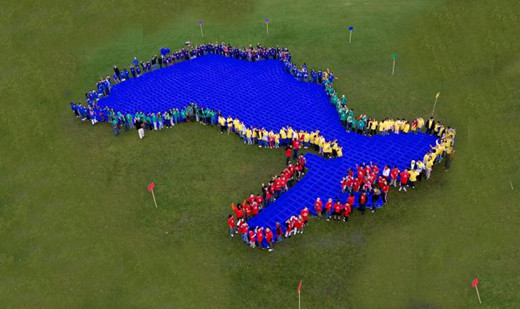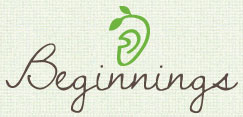Every day, in cities and towns around the world, people step up to the curb with their Blue Boxes full of glass, cans, papers, plastic and other material for recycling. Listen to how Ontarians Wendy Cook, Colin Issacs and Derek Stephenson brought it to fruition.
The Blue Box recycling concept has been a huge success for the environment — and it all started in Ontario, more than a quarter century ago. Many people had a hand in getting recycling started in this province; three people who were intimately involved were Wendy Cook, Colin Isaacs, and Derek Stephenson.
They said no one would do it
Recycling was an idea that many experts said would never catch on. It was associated with hard times or shortages — for example, during World War II, Canadians were encouraged to save scraps of metal, rubber and paper (as well as plastics, which were still relatively new). In better economic times, it just seemed easier to throw things away. Industries did little to encourage recycling, usually because the market prices for recycled materials were too low to make recycling worthwhile. Plus cities and towns across Ontario had ample landfill and dump space.
When Ontario's environmental movement began to gather steam in the early 1970s, today’s concerns regarding resource depletion, energy conservation, and climate change were not well understood by the general public. Nevertheless, for many people, throwing everything away simply seemed like the wrong thing to do. Accordingly, environmentalists came up with a practical waste management hierarchy, called the Three Rs — Reduce, Reuse, Recycle.
One of the few exceptions to concerns about being wasteful at that time was Ontario’s system for handling glass soft drink bottles. To ensure that these bottles were returned and reused, consumers paid a deposit when they bought soft drinks in a glass bottle. The deposit money was returned to the consumer when bottles were brought back to the store (somewhat similar to today’s system in which beer, wine and liquor bottles are returned to The Beer Store). But this system started breaking down as different types of containers, such as large plastic bottles and steel cans, became more popular. The soft drink companies and retailers considered it inconvenient and expensive to put more deposits on more types of containers.
A decision would have to be made. Ontarians could continue throwing everything into the landfills and be wasteful, or they could pay deposits on all kinds of materials, which would be complicated, expensive and hard to track. Some environmentalists thought of a third idea: these materials could be collected at curbside and RECYCLED!
Many experts in both government and private sector said recycling would never work. The prevailing wisdom among professional waste management experts was that people at home and at work would not want to go to the trouble of sorting their own garbage.
With this thought in mind, Ontario’s Ministry of the Environment planned to build its own mechanical garbage sorting facility. The idea was that this machinery would sort all the garbage into waste or recycling, and Ontarians could continue to simply throw everything away. Stephenson, Isaacs, Cook and other like-minded environmentalists thought this would be too expensive, would result in high levels of contamination in the recycled materials, and — perhaps most importantly — would not educate people about the need to make better use of our resources nor actively involve them in the solution. They also realized that they could not simply argue that recycling would work; they had to
show it could be done.
Blue Boxes are born
In 1974, Stephenson and McGinnis put a small plan into action. They did pilot programs in several areas, including Toronto’s Beaches neighbourhood and the Canadian Forces Base at Borden. These programs had a very high participation rate. At one site, they collected so much recycled material that they bent the frame on one of the trucks.
During the 1,500-household Kitchener pilot program that followed, they decided to distribute boxes in which homeowners could put their recyclables. At the time, the manufacturer only had blue coloured boxes, and so only blue boxes were provided to the home owners. Right away, participation was 85 per cent. Pretty soon, people who didn't get Blue Boxes started asking for them, and the program was expanded to all of Kitchener.
In 1981, the Minister of the Environment announced funding for municipalities to start blue box programs. After Mississauga joined Kitchener with its own blue box program in 1986, recycling took off, expanding to Toronto, across Ontario and to pilot programs in 16 cities around the world by the end of the 1980s. Even by the end of 1988, a million households in Ontario were recycling. Today, more than 95 per cent of Ontario households have access to blue boxes.
What happens to the collected materials?
Garbage collection in Ontario is managed by municipalities, which either employ their own staff, contract collection to a private company, or combine both methods (as is done in Toronto). Collection trucks are often now equipped to take different types of materials in separate compartments — there’s one for plastics and metal, one for paper products, and so on. The trucks take their haul to sorting centres, where they are processed (further segregated, compressed and baled). Organic (compostable) materials are usually collected in separate trucks and taken to composting facilities.
From the sorting centres, the recyclable materials are marketed to companies that can reuse them. Today’s paper industry, for example, uses large amounts of recycled paper.
Currently, Ontario’s
Blue Box program is overseen by the
Waste Diversion Organization, a stand-alone government agency.
Stewardship Ontario (a not-for-profit agency funded by Ontario-based brand owners, first importers or manufacturers of the products and packaging materials) manages the industry-funding component of the programs. In addition to operating the Blue Box financing program, Stewardship Ontario also manages
Orange Drop, a recycling and safe disposal program for hazardous or special waste.
The result of more than a generation of effort on recycling is a big success — a made-in-Ontario solution that has grown hand-in-hand with the environmental movement and became a recycling model for the rest of the world.

